
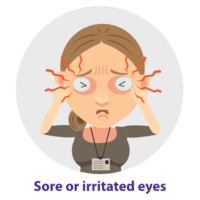
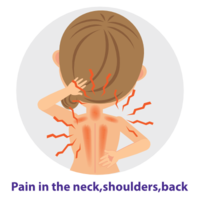
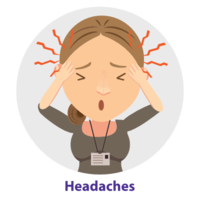

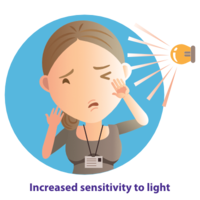
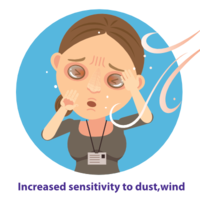

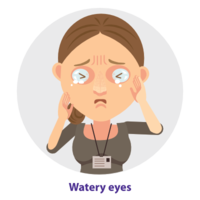
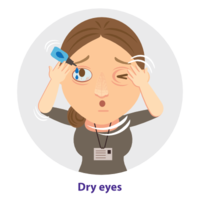

“When eyesight starts to become a big problem in the digital society, whether Whether in childhood or in adulthood, blurred vision, muscle strain night blindness, macular degeneration caused by staring Staring at the computer screen for a long time without rest If not corrected in a timely manner, it can lead to blindness.”


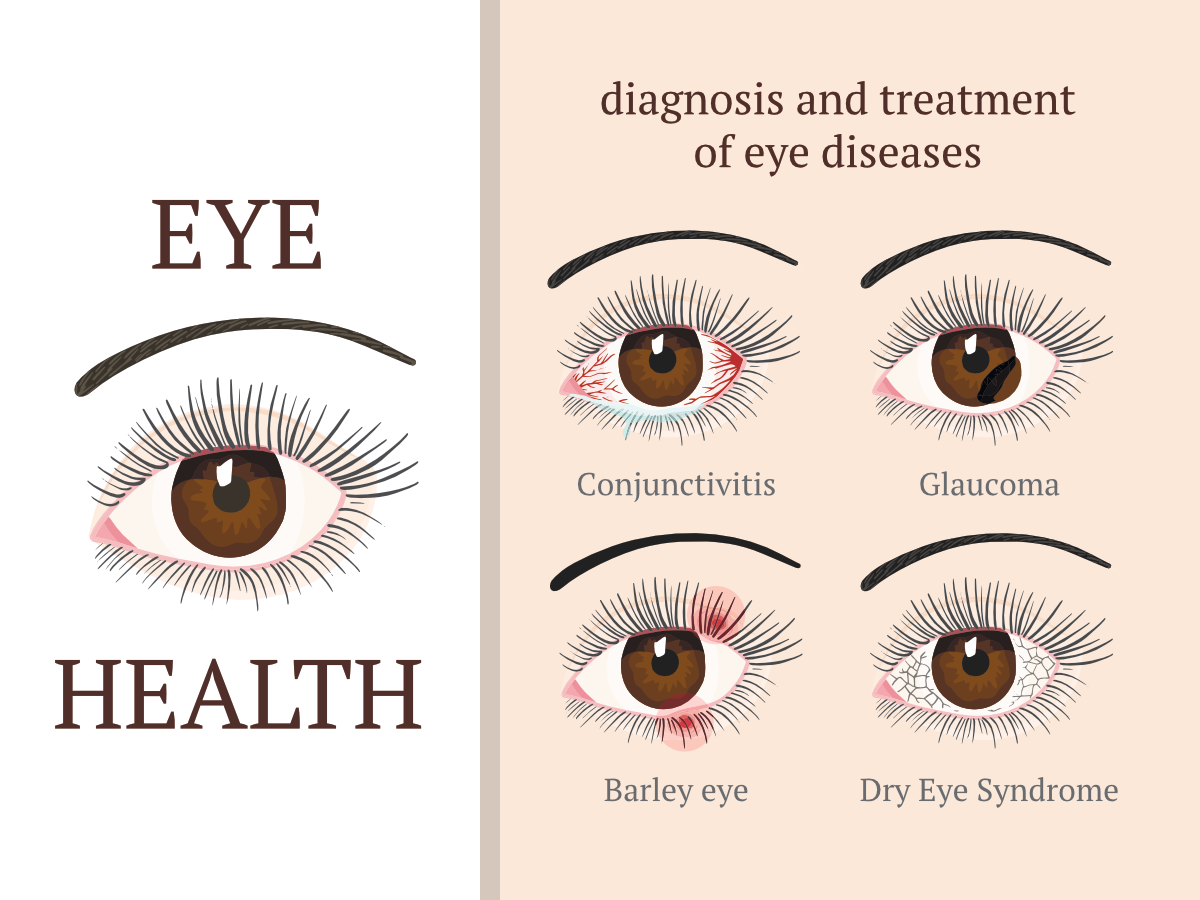

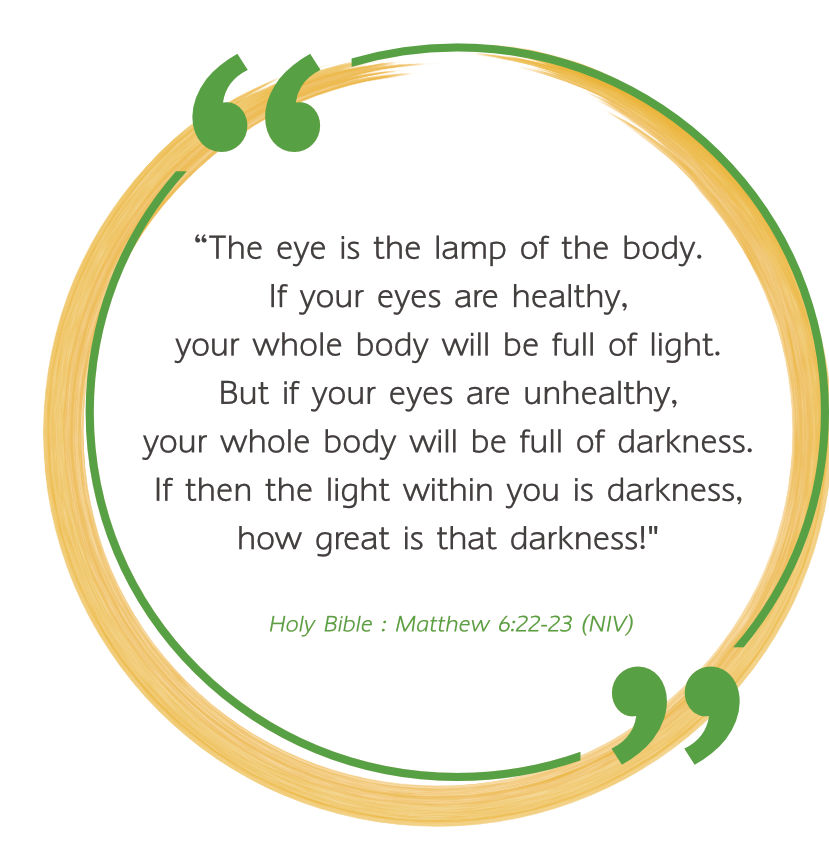


Bilberry is a Scandinavian fruit. It is a plant of the Vaccinium family with small fruit. 3-10 mm in diameter, rich. A wide variety of antioxidants with important substances such as anthocyanin and anthocyanidin that help nourish the eyes There are also other nutrients that are benefits to humans such as vitamin C, vitamin E Vitamin A, bioflavonoids, zinc, selenium Manganese, Magnesium, Phosphorus, Calcium
Anthocyanin and Anthocyanidin
active substances in bilberry useful

Sea buckthorn is a fruit in the berry family. yellow-orange It grows in the highlands and is very cold and is found mainly in Tibet. Russia. According to research, it has beneficial nutrients. More than 190 species, dubbed "Holy Fruit", are classified in traditional Chinese and Tibetan medicine, treating coughs, digestive ailments, nourishing skin, treating burnt skin. and depression in some cases Research has shown that it is high in vitamins, contains omega 3, omega 6, omega 7 and omega 9.
Seabuckthorn is one of the most powerful antioxidants. high efficiency which is rich in proanthocyanidins Flavanoids and polyphenols which was found to have the ability to resist 70 times more free radicals than vitamin C.



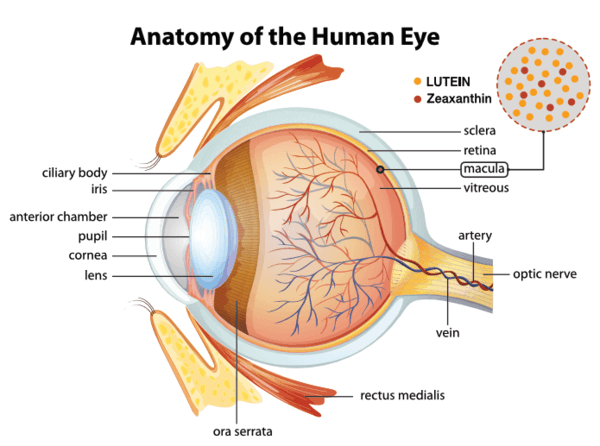
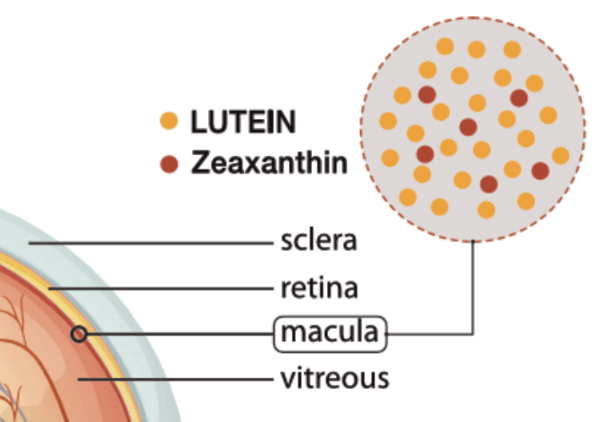
Lutein and zeaxanthin are nutrients inside. The eyes, the area called the macula and the lens of the eye. The body is unable to synthesize both substances on its own. Must be obtained from eating only. Lutein is a group of carotenoids. Found in plants, generally such as carrots, pumpkins. Pointed Leng, corn, marigold, etc.
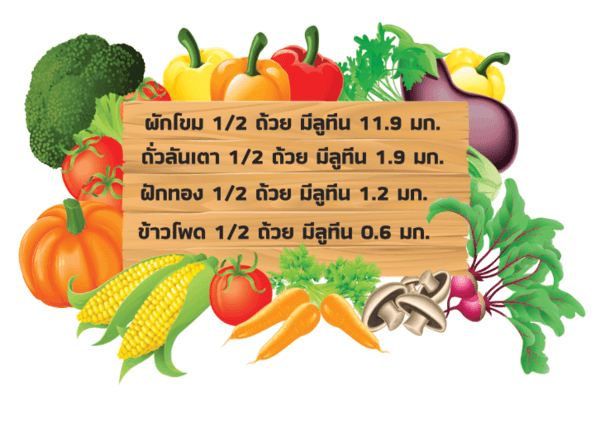

Vitamin A is a nutrient group of fat-soluble vitamins. Found in the form of vitamin A. retinoids such as retinol and retinyl esters Up to 80% of vitamin A is stored in the liver in the form of retinyl esters. Total cumulative under normal conditions The concentration of vitamin A in the liver should be at least 20 micrograms per gram of liver weight to be able to maintain vitamin A levels in the blood. enough to meet the needs of the body
Vitamin A plays an important role in vision. especially in dim light growth and make Cells in various tissues are in normal condition. Vitamin A in humans causes clinical symptoms associated with with eyes and vision which is called the condition that Xerophthalmia that started with night blindness (night blindness) if symptoms are not treated will become more severe until the cornea becomes cloudy (keratomalacia) and eventually blind. In addition, there have been reports of an increase in the incidence of Infectious diseases of the respiratory tract and tract Diet in infants and young children with vitamin A deficiency and is the leading cause of death in old age as well
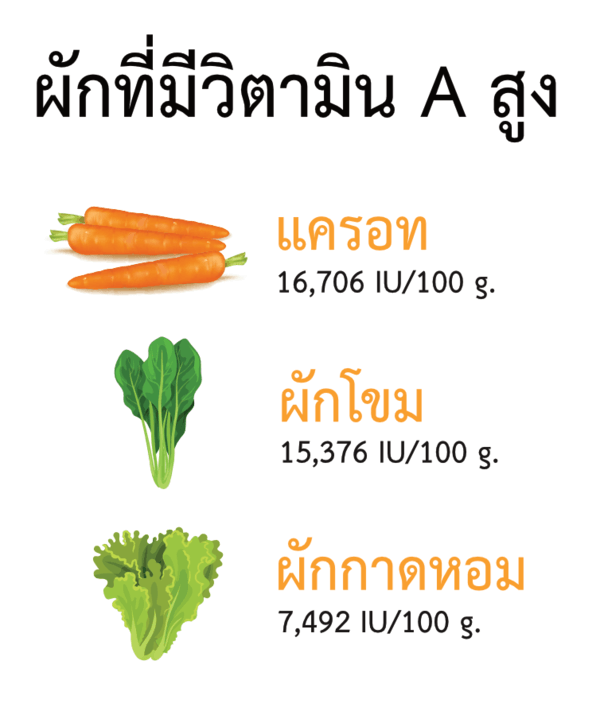

Vitamin E is an oil soluble vitamin. It is an antioxidant and is necessary for the body. in various processes of the body.
Vitamin E deficiency causes nervous system disorders. and the deterioration of the lines The fibers of nerve cells (axon degeneration) cause the patient to walk staggered. (spinocerebellar ataxia) Myopathy is characterized by muscle pain and muscle weakness.
Food sources of vitamin E are: Various vegetable oils such as corn oil, rice bran oil, soybean oil Wheat germ oil, etc. Meat, vegetables and fruits have the least vitamin E.
Because vitamin E acts as an antioxidant. and plays a role in the process of combating inflammation (anti-inflammatory process). Vitamin E can inhibit platelet aggregation. and help boost immunity. or vitamin E in combination with other antioxidants to see the effect of changes in the condition. Various illnesses or studies on the effect of vitamin E supplementation on risk reduction. of screen disease optic nerve {Aged-related Macular Degeneration (AMD)} is both visible and non-effective.


Vitamin C or ascorbic acid is a vitamin that is essential for life and good health. human cannot synthesize vitamin C on its own because it does not contain enzymes. L-gulonolactone oxidase, therefore, humans need vitamin C. from food only
Vitamin C is a water-soluble vitamin. It has antioxidant activity, reduces lipid peroxidation and inhibits the generation of carcinogenic nitrosamines. Vitamin C has Important for the synthesis of collagen (collagen), carnitine and transport agents. The nerve (neurotransmitter) plays a role in the metabolism of amino acids and carbohydrates improves iron absorption including increasing immunity If there is a severe vitamin C deficiency will cause scurvy.

omega 3 fatty acids It is a polyunsaturated essential fatty acid. which the body cannot create on its own need to eat omega 3 fatty acids There are many types. depending on the length of the molecular structure The most commonly known are ALA, EPA, and DHA.
Omega-3 fatty acids are very important for the eyes, brain, blood vessels, heart. Omega 3 is an antioxidant. Help reduce inflammation of the body in research found that the amount of omega 3 The eyes and brain and found that omega 3 play an important role in the nervous system

Omega-7 fatty acids are unsaturated fatty acids that have recently been discovered in 2008 by a group of researchers from Harvard Medical School The properties were found to prevent coronary heart disease. Reduce the accumulation of cholesterol in the blood vessels.
It will also stimulate mucosal regeneration. in the tissues of the eyes, mouth, respiratory tract, intestines, vagina and skin.
Studies have found high levels of omega-7 fatty acids in sea buckthorn seeds.

Zinc is important for the functions of the body involved in growth. infectious disease immunity Reproduction and the neurobiological system that control behavior
The total amount of zinc in the human body is approximately 2.5 g in men and 1.5 g in women. The vast majority of zinc (85%) is found in bones and muscles, only 0.1% is in the blood but is important part Because there is a turnover rate between zinc. in the blood and other organs up to 130 times a day by Normally, the body has a zinc drive. mainly through the stool which the amount excreted is directly proportional to the volume absorbed and the level of zinc in the body at that time There is also a loss of zinc through urination. Skin, hair, semen, menstrual blood, and breast milk.
People with severe zinc deficiency have symptoms of dermatitis, loss of appetite, decreased taste and smell, hair loss, and diarrhea. Slow growth, slow reproductive system have a mood disorder It can be easily infected and can be fatal.
Zinc, The small amount of nutrients your body needs on a daily basis. It is important to work in different parts of the body. Studies have shown many benefits of sync. For example:
However, eating zinc must not exceed the limit for the safety of the body.



